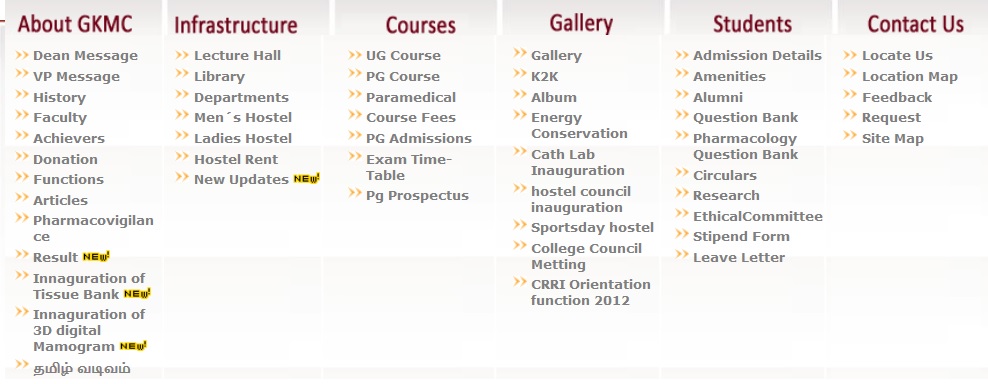Medicine Applied To Anaesthesiology MD Question Bank : gkmc.in
Name of the University : Government Kilpauk Medical College
Degree : Post Graduate (M.D)
Subject Code/Name : 2039/Medicine Applied To Anaesthesiology
Paper : II
Document Type : Question Bank
Website : gkmc.in
Download Model/Sample Question Paper :
2001-2004 : https://www.pdfquestion.in/uploads/gkmc.in/4192-1-68156.pdf
2005-2008 : https://www.pdfquestion.in/uploads/gkmc.in/4192-2-68157.pdf
2009-2010 : https://www.pdfquestion.in/uploads/gkmc.in/4192-3-68158.pdf
Upto 2000 : https://www.pdfquestion.in/uploads/gkmc.in/4192-4-68155.pdf
GKMC Medicine Applied to Anaesthesiology Question Bank
March 2009 :
Sub. Code: 2039
M.D. DEGREE EXAMINATION
Related : GKMC Cell Physiology, Molecular Biology & Human Genetics MD Question Bank : www.pdfquestion.in/4198.html
Branch X : ANAESTHESIOLOGY
(Common to all candidates)
MEDICINE APPLIED TO ANAESTHESIOLOGY
Q.P. Code : 202039
Time : Three hours
Maximum : 100 marks
Draw suitable diagram wherever necessary :
Answer ALL questions :
I. Essay questions : (2 x 20 = 40)
1. Describe the pathophysiology of rheumatic valvular heart disease. Discuss in brief the cardiopulmonary bypass management of valvular replacement.
2. Anaesthetic management of posterior cranial fossa tumor.

II. Write short notes on : (10 x 6 = 60)
1. Anaesthetic consideration in electroconvulsive therapy.
2. Lung compliance.
3. Amniotic fluid embolism.
4. Soda bicarbonate.
5. Post-operative jaundice.
6. Neuro endocrine stress response.
7. TURP syndrome.
8. Pre-operative preparation in case of broncho pleural fistula.
9. Anaphylactic shock.
10. Temparo mandibular joint ankylosis.
September 2009
Sub. Code: 2039
M.D. DEGREE EXAMINATION
Branch X – ANAESTHESIOLOGY
(Common to all candidates)
MEDICINE APPLIED TO ANAESTHESIOLOGY
Q.P. Code : 202039
Time : Three hours Maximum : 100 marks
Draw suitable diagram wherever necessary
Answer ALL questions
I. Essay questions : (2 x 20 = 40)
1. Discuss the causes, diagnosis and management of cardiac dysrhythmias during anaesthetic practice.
2. Discuss the anaesthetic considerations and pathophysiology in obese patients.
II. Write short notes on : (10 x 6 = 60)
1. Thyroid storm
2. TURP syndrome
3. Diabetic ketoacidosis
4. Angiotensin receptor blockers
5. Preanaesthetic preparation of chronic smokers
6. Vasopressin in anaesthesia and ICU
7. Methods of airway assessment
8. Glassglow coma scale
9. End stage renal failure
10. Plasma volume expanders.
March 2010
Sub. Code: 2039
M.D. DEGREE EXAMINATION
Branch X : ANAESTHESIOLOGY
Paper II – (for candidates admitted from 2004-05 to 2007-08) and
Part II / Paper I – (for candidates admitted from 2008-2009 onwards)
MEDICINE APPLIED TO ANAESTHESIOLOGY
Q.P. Code : 202039
Time : Three hours
Maximum : 100 marks
Draw suitable diagram wherever necessary :
Answer ALL questions. :
I. Essay questions : (2 x 20 = 40)
1. Anaesthetic management of a child of 4 yrs. posted for tetralogy of Fallot correction under cardiopulmonary bypass.
2. Discuss bronchopleural fistula and its anaesthetic management.
II. Write short notes on : (10 x 6 = 60)
1. Bispectal index.
2. HELLP syndrome.
3. Brain death.
4. Digitalis.
5. Porphyria.
6. Cushing syndrome – Anaesthetic problem and management.
7. Physiological changes in aged.
8. Kyphoscoliosis – anaesthetic problem.
9. Electrical burns.
10. Quincy and anaesthesia.
Physical & Organic Aspects of Biochemistry, Instrumentation Biochemical Techniques, Biostatistics MD :
September 2009 :
Sub. Code: 2043
M.D. Degree Examination
Branch XIII – BIOCHEMISTRY
(Common to all Candidates)
Paper I – Physical And Organic Aspects Of Biochemistry, Instrumentation Biochemical Techniques, Biostatistics
Q.P. Code : 202043
Time : Three hours
Maximum : 100 marks
Draw suitable diagram wherever necessary :
Answer ALL questions :
I. Essay questions : (2 x 20 = 40)
1. Describe the structure and types of Collagen. Add a note on the relationship of function to the three dimensional structure.
2. Describe the chemical composition, classification of Lipoproteins and their separation techniques.
II. Write short notes on : (10 x 6 = 60)
1. Ion selective electrodes.
2. Blotting techniques.
3. Sphingolipids.
4. Biological role of Dextrin and Cellulose.
5. Gel filtration Chromatography.
6. Computer applications in Clinical chemistry.
7. Correlation coefficient and coefficient of variation.
8. Tandem mass Spectrometer.
9. Synthetic Nucleotides.
10. Flame emission photometry.
March 2010 :
I. Essay questions : (2 x 20 = 40)
1. Describe the structural organization of adult hemoglobin. Explain the changes occurring at the molecular level during oxygenation.
2. Describe the principles, types and applications of radio immuno assay. How does this technique compare with ELISA techniques?
II. Write short notes on : (10 x 6 = 60)
1. Arachidonic acid derivatives and their functions.
2. Glucose biosensors.
3. Working principle of atomic absorption spectrophotometry.
4. Liposomes.
5. SDS – polyacrylamide gel eletrophoresis.
6. Dietary fibre.
7. Dry chemistry methods.
8. Evaluation of a method of estimation.
9. Scintillation detectors.
10. Determination of primary structure of protein.
March 2009
I. Essay questions : (2 x 20 = 40)
1. Describe in detail the structure, classification and functions of immunoglobulins.
2. Name the plasma/RBC buffers and urine buffers. Describe the role of respiratory system and the role of kidney in the maintenance of acid base balance.
II. Write short notes on : (10 x 6 = 60)
1. Tonometry.
2. Chemiluminescence.
3. Reference materials.
4. Uronic acids and sugar alcohols.
5. Ion exchange chromatography.
6. Evaluation of diagnostic test.
7. ELISA.
8. Membrane proteins.
9. Sterols.
10. Measurement of radioactivity.